-
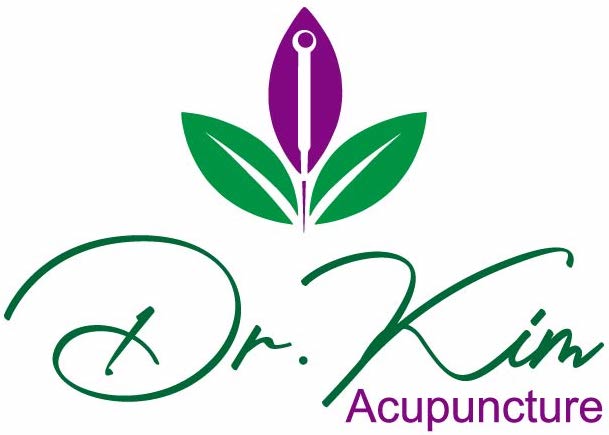 Indigo Health and Wellness2135A 33 Ave SW
Indigo Health and Wellness2135A 33 Ave SW
Calgary, Alberta
T2T 1Z7 - Tue9 am - 6 pmWed9 am - 6 pmThu9 am - 6 pmFri9 am - 6 pmSat10 am - 6 pmTreatments by appointment only
Follow Kim!
-
Latest Articles:
- • Spring Clean Your Way to Better Health •
- • 5 Healthy Ways to Embrace the Spring Season •
- • Fun Things to do this Spring •
Health WellNews
Easing Transitions with the Earth Element
We all are very familiar with Spring, Summer, Fall and Winter but why does Chinese Medicine include a fifth season and where does it fit on the calendar? According to TCM theory, the fifth season is actually that important time between the seasons, where we ‘return to center’ so we can ‘pivot’. About 2-3 weeks before the beginning of each season is a time of transition.
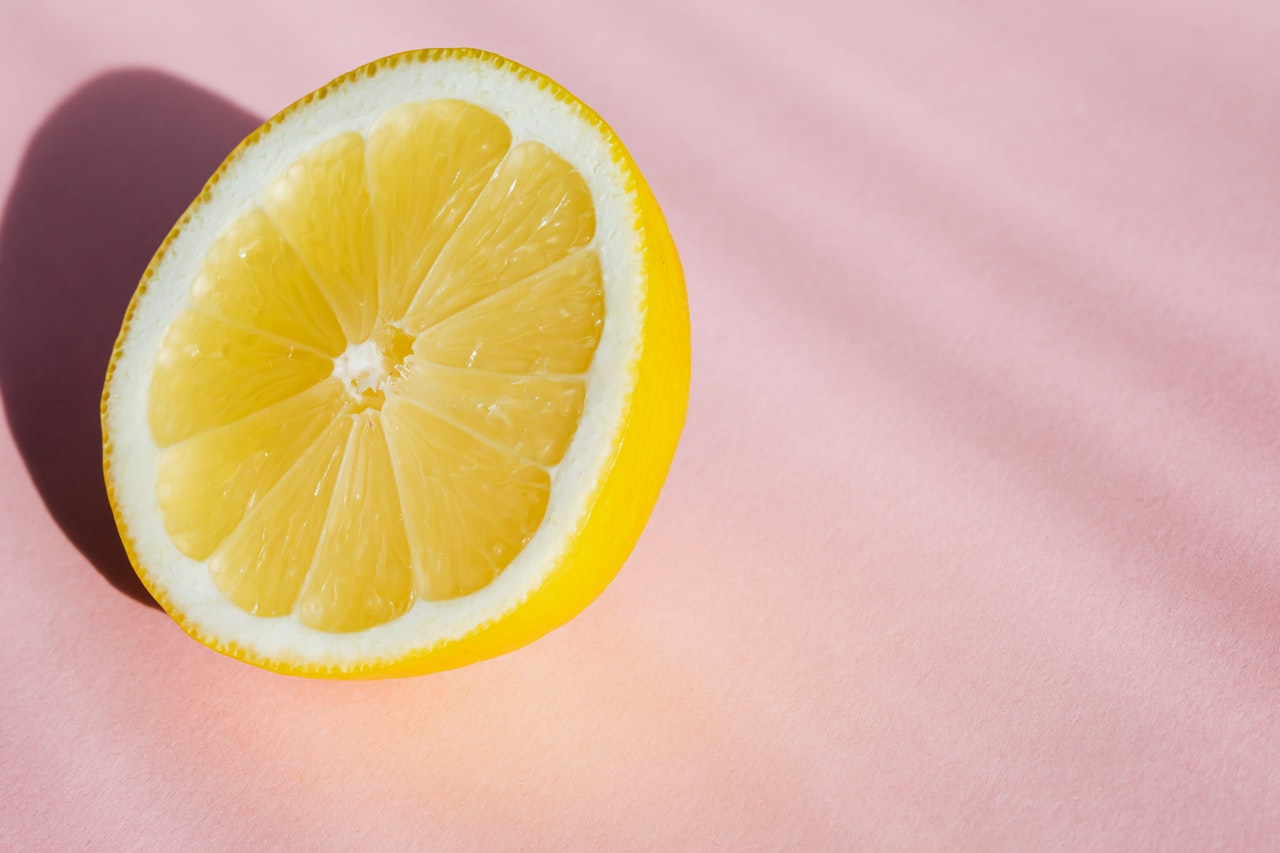
Each season correlates with an elemental energy. Spring belongs to the wood element, Summer to fire, Fall to metal and Winter to water. The transitional time between the seasons rightfully belongs to the earth element as this is the time when the seasonally dominant energy returns to the earth to be transformed into the next seasonal energy.
The Earth Element is generated and managed in the body by the spleen and stomach. These organs are in the business of metamorphosis. As digestive organs (according to TCM), they transport and transform the food we eat into nutrition to build our blood and nourish our cells. The spleen governs the muscles, and is important in the free movement of the body. The associated orifice is the mouth and spleen Qi manifests in the lips. The Spleen is also known for housing the intellect (yi) and is involved with the thinking aspect of spirit. The color of the earth element is yellow, and the taste is sweet.
The Chinese Lunar Calendar sets the start of the seasons earlier than our Gregorian calendar, so if we are following the seasons according to Chinese Medicine we can anticipate the start of Fall this year around Aug 7th. The period about 18 days prior to that date (beginning around mid-July) is called late summer, and this is the time to pay special attention to the energy of transition.
The benefit of nourishing our earth element during this time is to gain balance and stability for periods of change. The earth element represents our wide center stance from which we can safely assess the next move (picture the slow smooth movements of tai chi). The importance of core stability rings true whether we are talking about physical activity or more subtle energy dynamics.
1) Diet:
Avoid damp cold food such as ice cream as it can put a burden on the spleen that prefers warm, dry conditions. Eat breakfast between 7-9am which is stomach time according to the Qi clock. From 9-11am is spleen time. Some gentle activity is ok but as the spleen converts food to Qi, try to take it easy so you do not disrupt digestion. Avoid processed sugar while enjoying the natural balance of sweetness from the earth with foods like apples, carrots, dates, and sweet potatoes.
2) Release Worry-Patterns:
The spleen houses the intellect and is responsible for thought but can be weighed down by overthinking. This will slow its ability to transform our food. We can all think of times when worry led to unpleasant digestive experiences.
So, find ways to shift patterns of over-thinking and worry.
(Cue the serenity prayer…)
3) Yellow:
Stimulate earth energy with its color and brighten up someone’s day by wearing more yellow. Notice the yellow colors in nature, stop and absorb their frequency. And eat yellow foods: bananas, yellow peppers, lemons etc.
4) Earthing:
You know what to do. Connect direct! Get those bare feet on the ground (pesticide-free please).
Now get some Vitamin-E on those earthy lips and pucker up: you’ll be ready to give Fall a sweet kiss hello.
Traditional Tips for Insomnia
When you consider that Traditional Chinese Medicine (or TCM) dates back over 3,000 years, it is easy to see the vastness of theory and history involved. This fascinating complementary medicine arms practitioners with a plethora of unique diagnostic tools. These tools include an ability to detect Qi imbalances, define the underlying problems and correct them. When it comes to Spring, Traditional Chinese Medicine recommends MORE activity. In order for one to become more physically active, it is imperative to have and maintain a healthy sleep schedule. However, recent statistics show nearly 60 million Americans experience insomnia and other sleep-related problems daily (and this statistic was taken before the Covid-19 global crisis). With these numbers, understand that if you are suffering from insomnia or unable to get a good night’s rest, you are absolutely not alone. The good news is, implementing some basic TCM practices could help you get back on track.
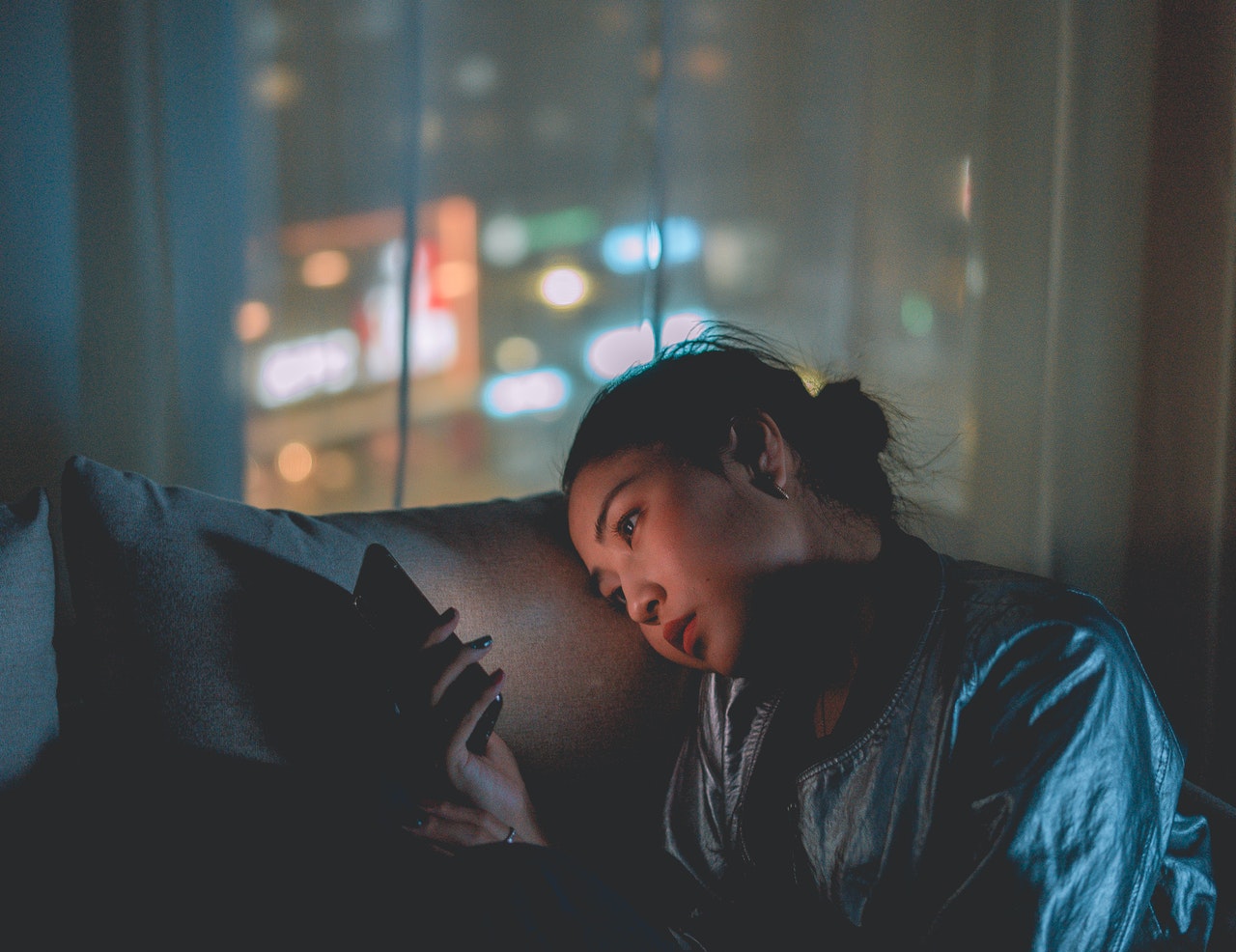
Acupuncture and TCM continue to come out on top of the list of suggested treatments for sleepless nights and improper circadian rhythms. The reason TCM is so effective has a lot to do with the adaptability of treatment modalities. TCM does not only suggest herbs and acupuncture, or massage and physical exercise but also lifestyle changes to introduce healthy habits. Here are some of our favorite lifestyle adaptations you can consider if you or someone you love is struggling with insomnia.
Spend time outside: Camping has been shown to help reset the sleep cycle of insomniacs. Your body will be able to reset itself after a couple of days, allowing your circadian rhythm to get you back into a proper sleeping pattern. This theory goes hand in hand with some of TCM’s primary principles; staying in tune with nature. Ask me for some of my favorite springtime outdoor activities.
Digital detox: The digital stimulation we experience these days is overwhelming. This past year was absolutely no exception. In 2020, virtual meetings and classes took over our homes, near-constant attention to news updates became a necessary evil, and social media became the primary means of community. With the “go-go-go” attitude of mainstream culture, sometimes digital stimulation alone can make it hard to slow down enough to find rest. Turn off the devices at least 2 hours before bed. Better yet, create a digital detox day of the week: one day where you and your family unplug and allow yourself to reacclimate to the natural world.
Plan for sleep: Setting a bedtime, and sticking with it, can help reset your sleep cycle. Implement a routine and do the same things nightly before going to bed. If you are struggling to fall asleep on time, consider a wind-down routine. Create a routine for yourself that may include a cup of tea, a yoga or tai chi session, reading or writing. Experiment with what feels best for your mind and body.
Change the lighting: We are all sensitive to light. Before the regular use of artificial lighting, humans spent their evenings in a slow transition to nighttime darkness. In the evening create a darker environment in your home to help your brain ease out of the daytime stimulation and start slowing down. Alternatively, when you wake up in the morning, be sure to open the shades and turn the lights on again to help tell the brain to wake up and get going. Consistency is essential and will help train your brain and balance your circadian rhythm.
Late-night binges: Stop ingesting caffeine, alcohol, and nicotine and go easy on the late-night snacks. Eating too late is common and can cause indigestion and restless nights. If you’re still hungry right before bed, try something light and healthy, like a tablespoon of peanut butter or a handful of almonds.
Schedule your TCM evaluation: Traditional Chinese Medicine has been proven by many studies to be a safe and effective treatment for insomnia. Treatments include acupuncture, at-home acupressure routines, breathing exercises, lifestyle changes, environmental adaptations, herbal prescriptions, even nutritional recommendations and so much more. Your specific symptoms and patterns of disharmony will be addressed all in an effort to find the root cause(s) of your sleeplessness.
Spring TCM Life Tips
This transition allows for the ability to get more done and spend more time outdoors, possibly shedding those extra pounds gained over the holidays and reconnecting with nature. But as with any seasonal change, there are organ systems that need specific attention. This is where Traditional Chinese Medicine (TCM) excels in helping make a smooth transition.

As we transition from winter to spring, it’s important to understand that in TCM, the season of winter is associated with associated with the element of water and it corresponds to the kidneys. The kidneys house our life force or jing and therefore, they must be constantly fed and replenished, as jing dissipates over time. Winter is the perfect time to do this.and is done by sleeping more, eating hearty, warming seasonal foods, and avoiding excessive sweating or exercising.
The season of spring is associated with the element of wood and it corresponds to the liver. As everything around us blossoms in the spring, so too should we embrace this time. But the liver tends to be a bit of a bully for many people and it must be kept in check. Often the winter months leave some stagnant feelings, which can manifest in different areas like relationships, work, or even our bodies. If there is frustration, physical pain, or sadness, it may be a sign that energy is not flowing properly or optimally.
Eating according to the seasons is very important in TCM. As the weather gets warmer, most people gravitate towards healthier food options in an effort to lose some of the winter weight. But according to TCM, eating lighter, more natural foods actually gives the liver a chance to repair itself and that alone can help us feel more energetic and improve our clarity of thought. The immune system also functions better when excess sugar and dairy are removed.
Acupuncture is one of the tools in the TCM toolbox that can help make the transition from winter to spring easier. Acupuncture can balance the body as it reacts to the changes in the weather and activity levels. Regular acupuncture treatments have also been shown to boost immunity. Spring can cause flare ups associated with seasonal allergies and acupuncture treatments can help with the inflammation, sneezing, runny nose and watery eyes that accompany the allergic reactions. But most of all, acupuncture can help regulate those emotional imbalances that are often common during this transitional period.
Feng Shui is another way to make the transition from winter to spring easier. You might have heard of Feng Shui referred to in the Western world as similar to interior design. However, in Chinese culture, feng shui is understood as a far more complex system. It is a practice intended to create harmony in our interior space and relates to our personal energy, the natural world, and our environment.
The ultimate goal of feng shui is to create energized and balanced spaces by drawing in positive energies. It draws on a system of interactions and laws about how humans perceive our physical environment. The art of feng shui governs spatial arrangement and orientation in relation to the flow of energy or Qi (pronounced “chee”). Tossing out old clothing, magazines or just going through that one junk drawer we all have, will create an empty space that will then allow for growth throughout the spring season.
By incorporating some simple TCM techniques into your life you may just have a more enjoyable metamorphosis from winter into spring.
Self-Care and Preventative Medicines
Should I get acupuncture even when I’m not sick? This is a question I get often.
For thousands of years practitioners of acupuncture & Traditional Chinese Medicine (or TCM) have emphasized the importance of preventing illness and disease. So the answer is yes, by definition acupuncture and TCM work to keep the body in balance, not only to revive you when you when stricken by illness.

Going to the doctor when healthy is an obscure thought to those in the Western medical system. TCM practitioners look to many aspects of their patient’s lives beyond the physical aches and pains. According to TCM, there are many contributing factors that can bring the body out of balance. These include both internal and external factors such as seasonal changes, diet, physical activity, and emotional wellbeing.
Western allopathic medicine usually doesn’t recognize the role of emotions in creating illness beyond acknowledging stress exacerbates or causes 80 percent of all illnesses. According to TCM theory, specific emotions are linked to specific parts of the body: being stuck on any one emotion can bring that part of the body out of balance. Acupuncture and TCM can help us stay healthy by balancing these tendencies before chronic imbalances set in.
In one of the oldest books on TCM, “The Inner Classics of the Yellow Emperor,” compiled around 100 B.C.E., it’s written that excess joy slows and scatters qi, excess anger causes qi to ascend, excess sadness and grief weakens qi, excess worry knots and binds qi, fear descends qi and fright induces chaotic qi. The good news is each excessive emotions can be ‘harnessed,’ transformed and channeled into a virtuous emotion, which restores harmony and wellbeing. This transformation of emotions from excess to virtue is a vital aspect of the Yang-Sheng or preventative branch of Traditional Chinese Medicine.
Among the most common of excess emotion is the tendency of overthinking, worry and rumination; this will tend to result in digestive issues and/or metabolism concerns, as well as muscular tension and pain. In order to maintain optimal health one must learn to transform overthinking and worry into the virtue of creativity and dynamic insight.
Developing a regular meditation practice, even five to ten minutes once a day, can make a difference! You will develop the discipline to redirect worry and overthinking into resting in the present moment more often. A quote from “The Dhammapada” (The Buddha’s Path of Wisdom) expresses this, “As the bee collects nectar and departs without injuring the flower, or its color or scent, so let a sage dwell in his village.” When you find yourself worrying, compare your thoughts to a bee. Allow yourself to collect the ‘pollen’ of your thought while also germinating future ideas. This will transform your thoughts into nectar. A bee does not cling to only one flower.
Acupuncture can help you let go and move forward.
Try using acupressure at ST-36 and SP-3 to transform worry into creative action.
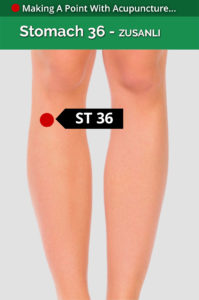 ST-36 is the great harmonizer point: this point does it all! ST-36 can help motivate you, improve your energy, digestion, and boosting your immune system! Locate this point by placing one hand just below the outer knee cap (index finger by the knee cap), use your other hand to find ST-36 (just below your pinky finger) just off the outer shin.
ST-36 is the great harmonizer point: this point does it all! ST-36 can help motivate you, improve your energy, digestion, and boosting your immune system! Locate this point by placing one hand just below the outer knee cap (index finger by the knee cap), use your other hand to find ST-36 (just below your pinky finger) just off the outer shin.
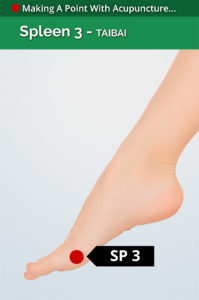 Pair ST-36 with acupressure at SP-3 to clarify your mind and regulate your digestion. Locate SP-3 along the inside of the foot, run your finger along the edge of the big toe until your finger ‘falls’ into a divot, about a three-finger width from the base of the big toe.
Pair ST-36 with acupressure at SP-3 to clarify your mind and regulate your digestion. Locate SP-3 along the inside of the foot, run your finger along the edge of the big toe until your finger ‘falls’ into a divot, about a three-finger width from the base of the big toe.
Look for future articles for tips on transforming other excessive emotions and nourish your vitality and wellbeing with the wisdom of Traditional Chinese Medicine.
Give us a call today to schedule your acupuncture tune-up.
Five Facts You Might Not Know About Acupuncture
Acupuncture is just one facet of a more inclusive medical system known as Traditional Chinese Medicine (TCM). This medical system has been around for about 3,000 years and it has helped thousands of people live long, happy, healthy lives. Acupuncture uses tiny, solid, stainless steel needles that are inserted into the body, which stimulates the nervous and immune systems, bringing balance back to the body.
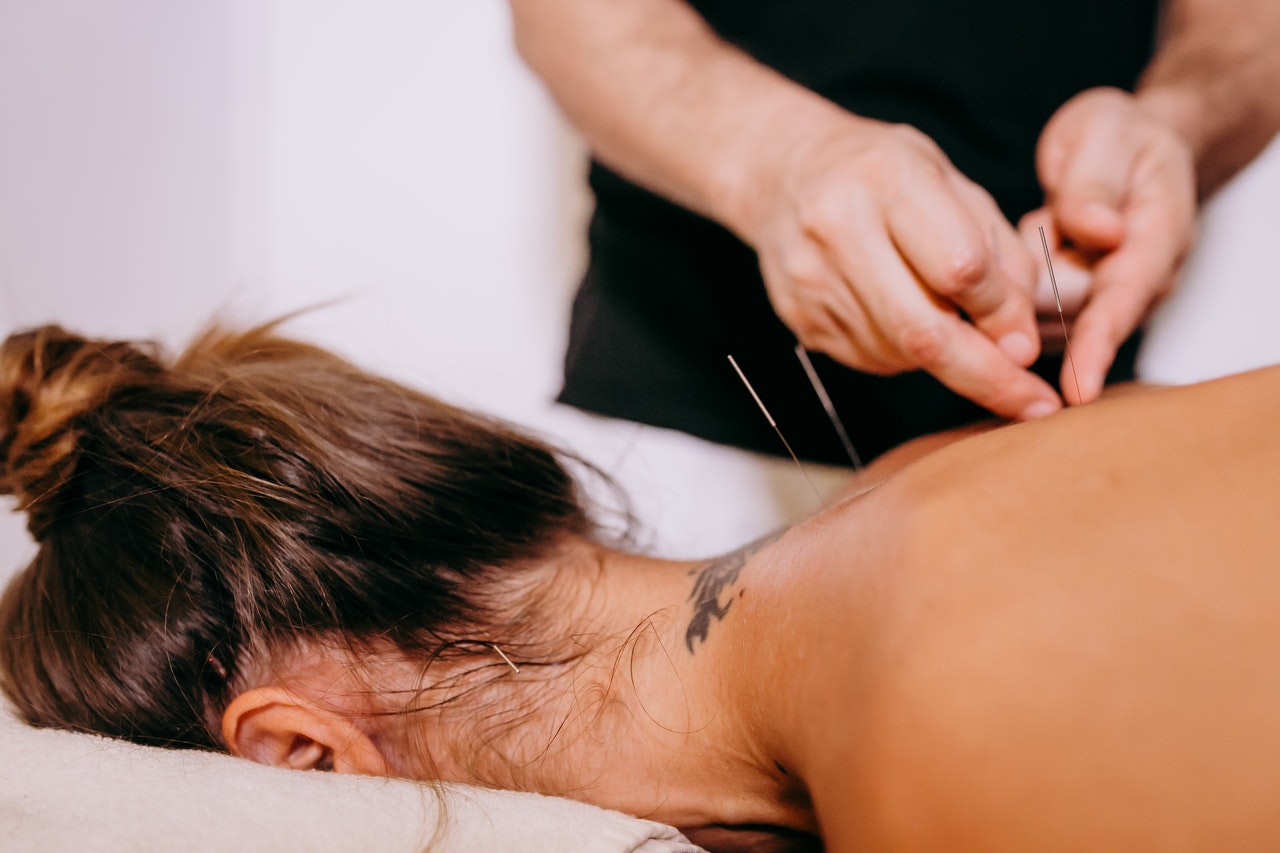
According to the National Commission for Acupuncture and Oriental Medicine, it is estimated that only 10 percent of Americans have tried acupuncture. But according to a survey by the U.S Department of Health and Human Services, those numbers are too high. They estimate only four percent of Americans have actually tried or used acupuncture. For those who have used acupuncture, the rates of success are at 75 percent or better. And many who have received acupuncture are impressed by the amount of attention to detail most acupuncturists give when treating their patients. Acupuncture treats the body holistically, looking at mind, body and emotions in order to give the best treatment possible and cover all bases of the person’s ailment.
Many people are hesitant to try acupuncture, because it can feel foreign and hard to wrap your head around. And with so few people actually using acupuncture, it is no surprise there are a lot of things people don’t know. Here’s a list of five things most people are surprised to find out when it comes to the practice of acupuncture.
Acupuncture does NOT hurt
Licensed acupuncturists hear it all the time, “I don’t like needles.” Well, realistically, who does? But the needles used by acupuncturists are the width of a human hair, very flexible and most people don’t even feel them. In fact, quite a few people who receive acupuncture regularly, actually fall asleep and take a nap once the needles are placed.
Acupuncturists are highly educated
To receive a degree in acupuncture, you are required to attend postgraduate school. This means most acupuncturists already have a bachelor’s degree before they even begin acupuncture school. The acupuncture license is a three to four year master’s degree that includes over 3,200 academic hours. That’s almost as much as most medical doctors.
There are free bonuses to getting acupuncture
Many people seek out acupuncture for a specific ailment. But the glory of this ancient medicine is you will also receive some free bonuses, like improved sleep, better concentration and improved mental attitude. Your whole being gets treated through acupuncture!
Acupuncture helps with almost everything
Most people think of acupuncture for pain relief, but the truth is it can treat so much more. Acupuncture can help with anxiety, depression, addiction, weight issues, insomnia, digestive issues and of course any kind of pain.
Not all acupuncture is the same
There are multiple styles of acupuncture: five element, TCM, Tan, Tung, auricular, abdominal, scalp, Korean, etc. No two are exactly alike, but they all have one common thread, helping people get and stay healthy.
So now that you know a little more about acupuncture, what are you waiting for? There’s no better time than the present to get going when it comes to your health. And there’s nothing stopping you except you.



Connect with Me!